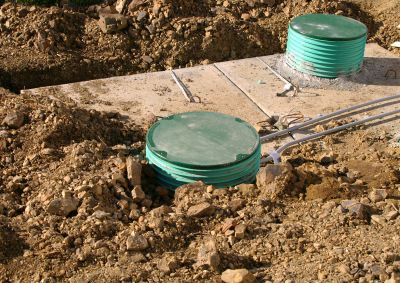Leading Products For Septic Installations To Ensure Reliable Performance
Explore essential products designed to optimize septic system efficiency and longevity for seamless installation and operation.
 Septic installation projects require a range of specialized products to ensure proper function and longevity of the system. From tanks and pipes to pumps and treatment additives, selecting the right components is essential for effective waste management. Understanding the various product options available can help homeowners and contractors make informed decisions tailored to specific site conditions and usage needs.
Septic installation projects require a range of specialized products to ensure proper function and longevity of the system. From tanks and pipes to pumps and treatment additives, selecting the right components is essential for effective waste management. Understanding the various product options available can help homeowners and contractors make informed decisions tailored to specific site conditions and usage needs.
Top Overall Option
Septic Tank System
A septic tank system is a comprehensive solution that includes a durable tank, inlet and outlet pipes, effluent filters, and optional pumps. Designed to handle waste decomposition efficiently, it serves as the central component in many septic setups. Properly selected and installed, a septic tank system can provide reliable service for years, with components available to suit various property sizes and site conditions.
Types of Products For Septic Installations
Septic Tanks
Various materials including plastic, concrete, and fiberglass designed to contain and process waste.
Inlet and Outlet Pipes
Durable piping options for directing waste to and from the septic tank, including PVC and ABS pipes.
Effluent Filters
Filters installed at the tank outlet to prevent solids from entering the drain field.
Distribution Boxes
Components that evenly distribute effluent across the drain field.
Septic Pumps
Pumps used to move wastewater in systems where gravity flow is insufficient.
Drain Field Beds
Pre-fabricated or custom-built beds that facilitate effluent absorption into the soil.
Bacterial Additives
Products that contain beneficial bacteria to aid in waste decomposition.
Inspection Ports
Access points for system inspection and maintenance.
Septic Tank Accessories
Includes covers, risers, and adapters to facilitate system access and maintenance.
Septic System Alarms
Devices that alert homeowners to system malfunctions or overflows.
Pump Tanks
Additional tanks that hold and pump wastewater in complex systems.
Leach Fields
Drainage systems that disperse effluent into the soil for natural filtration.
Septic System Fittings
Various connectors, elbows, and adapters for assembling the system.
Soil Testing Kits
Tools to assess soil suitability for septic drain fields.
Water Level Monitors
Devices to monitor tank levels and prevent overflows.
Popular Choices
Lightweight and corrosion-resistant tanks suitable for various applications.
Flexible and durable piping options for efficient waste transport.
Filters designed for straightforward maintenance and replacement.
Pump units with automatic operation for systems with challenging terrain.
Pre-fabricated kits that simplify installation of drain fields.
Alarm systems that notify homeowners of potential issues early.
Popular formulations to support waste breakdown in tanks.
Risers that provide easy access to septic tanks for inspections.
Heavy-duty tanks suitable for large-scale or permanent installations.
Connectors that accommodate movement and settling of systems.
Tools to evaluate soil absorption capacity for drain field planning.
Control units for managing pump operation and monitoring system status.
Specialized piping to ensure even distribution of effluent.
Fittings designed to withstand harsh conditions in septic environments.
Sensors to monitor tank levels and prevent overflows or backups.
Septic tanks serve as the core component of any system, providing a secure environment for waste decomposition. These tanks come in various sizes and materials, including durable plastics, concrete, and fiberglass, each offering different benefits in terms of installation, maintenance, and longevity. Complementing the tank, a network of pipes directs wastewater from the home to the tank and then to the drain field, requiring careful selection of pipe types and fittings to prevent leaks and blockages.
Additional accessories such as effluent filters, distribution boxes, and pumps play crucial roles in maintaining system efficiency. Effluent filters help prevent solids from escaping the tank, reducing the risk of clogs downstream. Distribution boxes evenly disperse effluent into the drain field, ensuring uniform absorption and preventing saturation. Pumps may be necessary in systems where gravity flow is insufficient, especially in hilly terrains or when the drain field is located at a higher elevation.
Proper installation also involves considering maintenance products, such as bacterial additives that aid in waste breakdown, and inspection ports for easy access during system checks. Selecting compatible components and materials suited to the specific site conditions can significantly impact the lifespan and performance of the septic system. Investing in quality products and understanding their roles can contribute to a more reliable and efficient waste management solution for residential or commercial properties.
Key Buying Considerations
- System size and capacity based on household or property needs.
- Material durability and resistance to corrosion or cracking.
- Compatibility of components with existing or planned system layout.
- Ease of installation and maintenance requirements.
- Local regulations and codes governing septic system components.
- Availability of replacement parts and accessories.
- Proper sizing of pipes and tanks to accommodate waste volume.
- Inclusion of features like access risers and inspection ports for maintenance.
- Consideration of terrain and site conditions affecting system design.
- Incorporation of additional features such as alarms or monitoring devices.
- Cost and warranty coverage for components and installation.
- Ease of access for inspections and repairs.
- Potential need for additional components like pumps or distribution boxes.
- Compatibility with waste treatment additives or bacterial products.
- Environmental factors that might influence system performance.
This content is for informational purposes only and does not constitute an endorsement or guarantee of any products. Always conduct thorough research and consult with a licensed professional when selecting products for septic installations.
